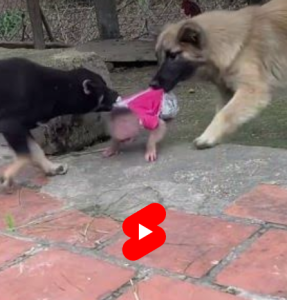
Trauma recovery is often one of the longest and most sensitive processes in the life of a rescued baby monkey. Many infants arrive at sanctuaries or rehabilitation centers after witnessing the death of their mothers or experiencing capture and abuse. These early traumas can manifest in withdrawn behavior, aggression, or difficulty forming bonds. A baby monkey-friendly approach recognizes that healing is not just physical—it’s emotional and psychological. Gentle, consistent care, along with minimal stress environments and trust-building routines, is essential to supporting these infants as they begin to feel safe again.
Interspecies empathy plays a surprisingly powerful role in baby monkey rehabilitation. Caregivers who show warmth, patience, and attentiveness can help traumatized monkeys begin to trust again. Similarly, baby monkeys who are paired with nurturing adult monkeys—or even with monkeys from different species in mixed rescue environments—can learn emotional cues and social behaviors by example. This empathy, both human and animal, is a cornerstone of what it means to provide truly compassionate care.
Art and cultural expression can be used to foster baby monkey-friendly attitudes within communities. Murals, songs, storytelling, and theater that feature monkeys as intelligent, emotional beings help shift perceptions—especially among younger generations. In regions where monkeys are misunderstood or seen as nuisances, creative media can celebrate their value and vulnerability. Integrating baby monkey protection into local art and folklore encourages a sense of pride and responsibility that goes beyond rules and regulations.
Local leadership is vital in sustaining baby monkey-friendly efforts. Conservation programs that are led by local community members tend to have higher success rates and longer-lasting impacts. These leaders often have intimate knowledge of local wildlife, customs, and geography. Empowering them with training, resources, and decision-making power ensures that baby monkey protection isn’t imposed from the outside, but rather grows from within. Their role also helps bridge the gap between scientific knowledge and cultural practices.
Gender roles in caregiving—both in humans and among primates—can also inform baby monkey-friendly care models. In some primate species, older sisters or aunties play significant roles in rearing infants. Recognizing and supporting these dynamics in rehabilitation settings creates more natural social structures. Similarly, human caregiving teams benefit from inclusive, gender-balanced representation, ensuring that different perspectives and strengths are brought into the caregiving process.
Global solidarity is the final piece in the puzzle. Baby monkey-friendly efforts don’t exist in isolation—they are part of a worldwide movement to treat animals and ecosystems with dignity. From urban rescue centers in South America to rural sanctuaries in Africa and Asia, the shared goal is to protect the most vulnerable and inspire change. When people around the world support each other—through donations, education, advocacy, or shared resources—they amplify their impact. Together, we can build a more compassionate future not just for baby monkeys, but for all life on Earth.